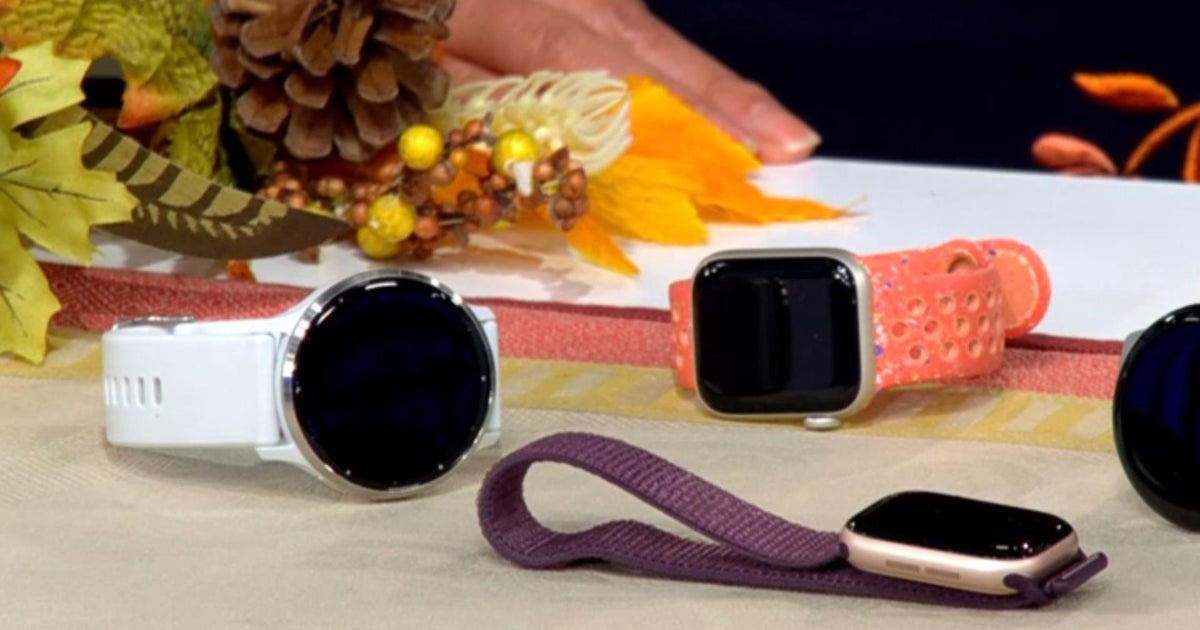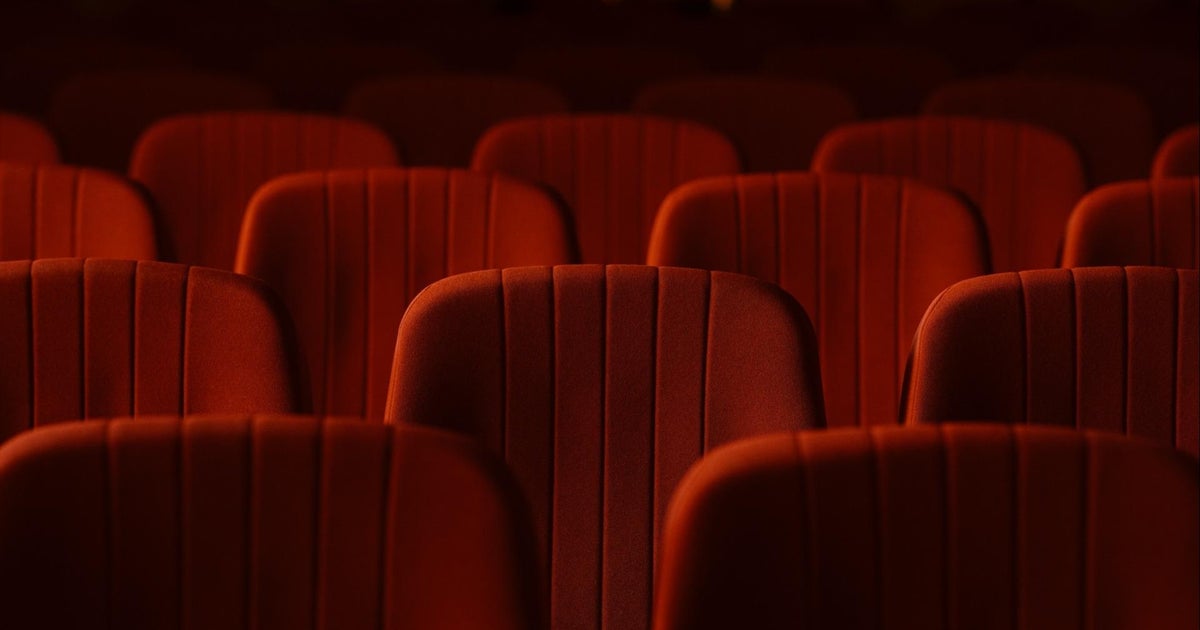CBS News
Use of AI to replicate voice of James Earl Jones for Darth Vader concerns actors

Over the course of an acting career that spanned more than six decades, James Earl Jones’ voice became an indelible piece of his work as a performer.
On screen, Jones, who died Monday at 93, brought to life a reclusive writer coaxed back into the spotlight in “Field of Dreams” and a haughty king of a fictional land in “Coming To America.” On stage, he won two Tony Awards for “The Great White Hope” and “Fences.” His work as a voice actor — the regal dignity of his portrayal of Mufasa in “The Lion King” and the menacing and deep timbre he lent to Darth Vader in “Star Wars” — helped cement his place as a legendary actor among generations of fans.
But in the wake of his death, an aspect of Jones’ career has come to the fore: consenting to the use of artificial intelligence to replicate his performance as Darth Vader after he stepped away from the role. Skywalker Sound and the Ukrainian company Respeecher used AI to recreate Jones’ villain for the 2022 show “Obi-Wan Kenobi” on Disney+. Mark Hamill’s voice was also “de-aged” using Respeecher for his appearance as Luke Skywalker in “The Mandalorian.”
Voice actors say they fear AI could reduce or eliminate job opportunities because the technology could be used to replicate one performance into a number of other movements without their consent — a concern that led video game performers with the Screen Actors Guild-American Federation of Television and Radio Artists to go on strike in late July.
Hollywood’s video game performers announced a work stoppage — their second in a decade — after more than 18 months of negotiations over a new interactive media agreement with game industry giants broke down over artificial intelligence protections. Members of the union have said they are not anti-AI. The performers are worried, however, the technology could provide studios with a means to displace them.
Concerns about how movie studios will use AI helped fuel last year’s film and television strikes by the union, which lasted four months.
To some, Jones’ decision to allow AI to replicate his voice raises questions about voice acting as an art, but also potentially helps lay the ground work for transparent AI agreements that fairly compensate an actor for their performance with consent. Zeke Alton, a voice actor and member of SAG-AFTRA’s interactive media agreement negotiating committee, said it’s “amazing” that Jones was involved in the process of replicating his voice.
“If the game companies, the movie companies, gave the consent, compensation transparency to every actor that they gave James Earl Jones, we wouldn’t be on strike,” Alton said. “It proves that they can do it. They just don’t want to for people that they feel don’t have the leverage to bargain for themselves.”
Jones, who overcame a childhood stutter, said in previous interviews that he was “happy to be able to talk at all, because there was time when I couldn’t.” His goal, he said, was for his voice to be clear. Speaking with The Associated Press in 1994, he said that he tried to make Darth Vader “more human and more interesting.” But George Lucas, the filmmaker who created “Star Wars,” advised him to “go back to a very narrow band of expression” because the mechanical parts of the villain’s body would make it difficult for him to sound more human.
Neither Skywalker Sound nor Respeecher responded to a request for comment. But a sound editor with Skywalker Sound told Vanity Fair that Jones signed off on the use of archival recordings to keep Darth Vader alive and that he guided Darth Vader’s performance for the Disney+ show as “a benevolent godfather.”
Voice actor Brock Powell said that the ability to use an actor like Jones’ voice in perpetuity could eliminate the need for actors who specialize in matching voices. That type of work provides steady jobs for many performers, they said, who can recreate a famous voice for video games, animated series and other types of media.
“To quote ‘Jurassic Park,’ the scientists were so preoccupied with whether or not they could, they didn’t stop to ask if we should,” Powell said.
That type of AI use could also reduce “ingenuity” in acting, they said, because new actors might not have the chance to come in and reinvigorate a role.
Crispin Freeman, an actor who has done voice matching work replicating Orlando Bloom’s voice in “Pirates of the Caribbean,” said that the technology may take away voice matching roles, but doesn’t harm “the ability of future artists to blaze their own trails” in new roles.
“We always need to keep reinventing new stories as we’re going forward, and not simply relying on the old stuff,” he said. “Rather than worrying, ‘Oh, will someone else be able to be Darth Vader,’ why don’t we make a new ‘Star Wars’ character that’s as compelling as Darth Vader?”
Jones’ contract could set an example of properly bargaining with an actor over their likeness, said Sarah Elmaleh, chair of SAG-AFTRA’s interactive negotiating committee. Elmaleh, a voice actor, said there is a chance for these tools to be used in “meaningful, smart artistic decisions.”
“I worry about a world where we conflate the superficial qualities of a person’s voice with their performance,” she said. “I can’t help getting away from the metaphor that’s baked into this character itself, which is, when you conflate the man with the machine, you become a tool for other forces, other powers that be.”
Alton, the voice actor, said he wonders about what the use of Jones’ voice as Darth Vader would mean if it were used for another 100 years and people didn’t remember “all of the different things that built him into the iconic character that he was.”
“It’s just a disembodied voice at that point. It’s part of the neutering of art that generative AI has the potential to do, and it’s sort of a heady subject, but it’s very important for us as a world to consider what we want our entertainment and our art to be in the future,” he said. “Do we want it to be human, or do we want it to be bland?”
CBS News
A study to devise nutritional guidance just for you

It’s been said the best meals come from the heart, not from a recipe book. But at this USDA kitchen, there’s no pinch of this, dash of that, no dollops or smidgens of anything. Here, nutritionists in white coats painstakingly measure every single ingredient, down to the tenth of a gram.
Sheryn Stover is expected to eat every crumb of her pizza; any tiny morsels she does miss go back to the kitchen, where they’re scrutinized like evidence of some dietary crime.
Stover (or participant #8180, as she’s known) is one of some 10,000 volunteers enrolled in a $170 million nutrition study run by the National Institutes of Health. “At 78, not many people get to do studies that are going to affect a great amount of people, and I thought this was a great opportunity to do that,” she said.
CBS News
It’s called the Nutrition for Precision Health Study. “When I tell people about the study, the reaction usually is, ‘Oh, that’s so cool, can I do it?'” said coordinator Holly Nicastro.
She explained just what “precise” precisely means: “Precision nutrition means tailoring nutrition or dietary guidance to the individual.”
The government has long offered guidelines to help us eat better. In the 1940s we had the “Basic 7.” In the ’50s, the “Basic 4.” We’ve had the “Food Wheel,” the “Food Pyramid,” and currently, “My Plate.”
CBS News
They’re all well-intentioned, except they’re all based on averages – what works best for most people, most of the time. But according to Nicastro, there is no one best way to eat. “We know from virtually every nutrition study ever conducted, we have inner individual variability,” she said. “That means we have some people that are going to respond, and some people that aren’t. There’s no one-size-fits-all.”
The study’s participants, like Stover, are all being drawn from another NIH study program called All Of Us, a massive undertaking to create a database of at least a million people who are volunteering everything from their electronic health records to their DNA. It was from that All of Us research that Stover discovered she has the gene that makes some foods taste bitter, which could explain why she ate more of one kind of food than another.
Professor Sai Das, who oversees the study at Tufts University, says the goal of precision nutrition is to drill down even deeper into those individual differences. “We’re moving away from just saying everybody go do this, to being able to say, ‘Okay, if you have X, Y and Z characteristics, then you’re more likely to respond to a diet, and somebody else that has A, B and C characteristics will be responding to the diet differently,'” Das said.
It’s a big commitment for Stover, who is one of 150 people being paid to live at a handful of test sites around the country for six weeks – two weeks at a time. It’s so precise she can’t even go for a walk without a dietary chaperone. “Well, you could stop and buy candy … God forbid, you can’t do that!” she laughed.
While she’s here, everything from her resting metabolic rate, her body fat percentage, her bone mineral content, even the microbes in her gut (digested by a machine that essentially is a smart toilet paper reading device) are being analyzed for how hers may differ from someone else’s.
Nicastro said, “We really think that what’s going on in your poop is going to tell us a lot of information about your health and how you respond to food.”
CBS News
Stover says she doesn’t mind, except for the odd sounds the machine makes. While she is a live-in participant, thousands of others are participating from their homes, where electronic wearables track all kinds of health data, including special glasses that record everything they eat, activated when someone starts chewing. Artificial intelligence can then be used to determine not only which foods the person is eating, but how many calories are consumed.
This study is expected to be wrapped up by 2027, and because of it, we may indeed know not only to eat more fruits and vegetables, but what combination of foods is really best for us. The question that even Holly Nicastro can’t answer is, will we listen? “You can lead a horse to water; you can’t make them drink,” she said. “We can tailor the interventions all day. But one hypothesis I have is that if the guidance is tailored to the individual, it’s going to make that individual more likely to follow it, because this is for me, this was designed for me.”
For more info:
Story produced by Mark Hudspeth. Editor: Ed Givnish.
“Sunday Morning” 2024 “Food Issue” recipe index
Delicious menu suggestions from top chefs, cookbook authors, food writers, restaurateurs, and the editors of Food & Wine magazine.
CBS News
A new generation of shopping cart, with GPS and AI

Watch CBS News
Be the first to know
Get browser notifications for breaking news, live events, and exclusive reporting.
CBS News
“All hands on deck” for Idaho’s annual potato harvest

Watch CBS News
Be the first to know
Get browser notifications for breaking news, live events, and exclusive reporting.











